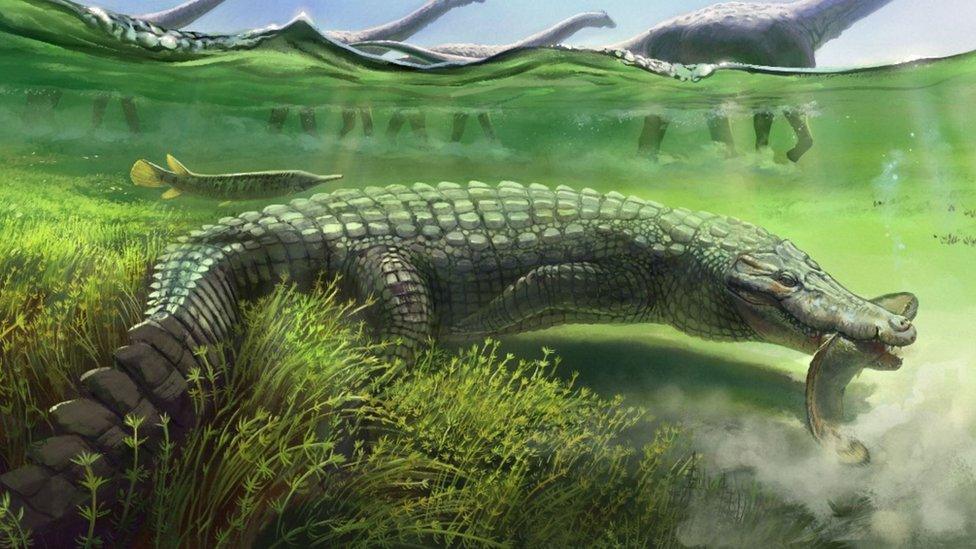Titanochampsa iorii: Scientists discover huge prehistoric crocodile in Brazil
- Published
- comments

Artist's impression of how the crocodile might have looked
Researchers have discovered a huge new species of prehistoric crocodile that roamed alongside dinosaurs in South America.
The crocodile, named Titanochampsa iorii, is thought to have lived around 70 million years ago, during the time of giant Titanosaurs.
It measured up to six metres in length and had a "very strong bite" according to scientists.
The animal was identified from a fossil originally found 35 years ago in the south-eastern Brazilian state of São Paulo.
What did scientists find?

Scientists believe the prehistoric croc is related to modern day crocodiles
When the fossil was first discovered in 1987, scientists mistakenly labelled it as a dinosaur skull due to its large size.
Upon closer inspection, it was later identified to be that of a new crocodile species.
Experts at Brazil's University of São Paulo, believe the giant creature belonged to the Neosuchia family - a group that includes all modern day crocodiles and their closest relatives.
They also think the ancient animal was likely to have been semiaquatic - living partly in the water and partly on land and that it had a "strong bite".
Palaeontologists say they hope the discovery will help them better understand how crocodiles evolved and why the Neosuchia species was so successful, while other crocodile species became extinct at the end of the Cretaceous period.
